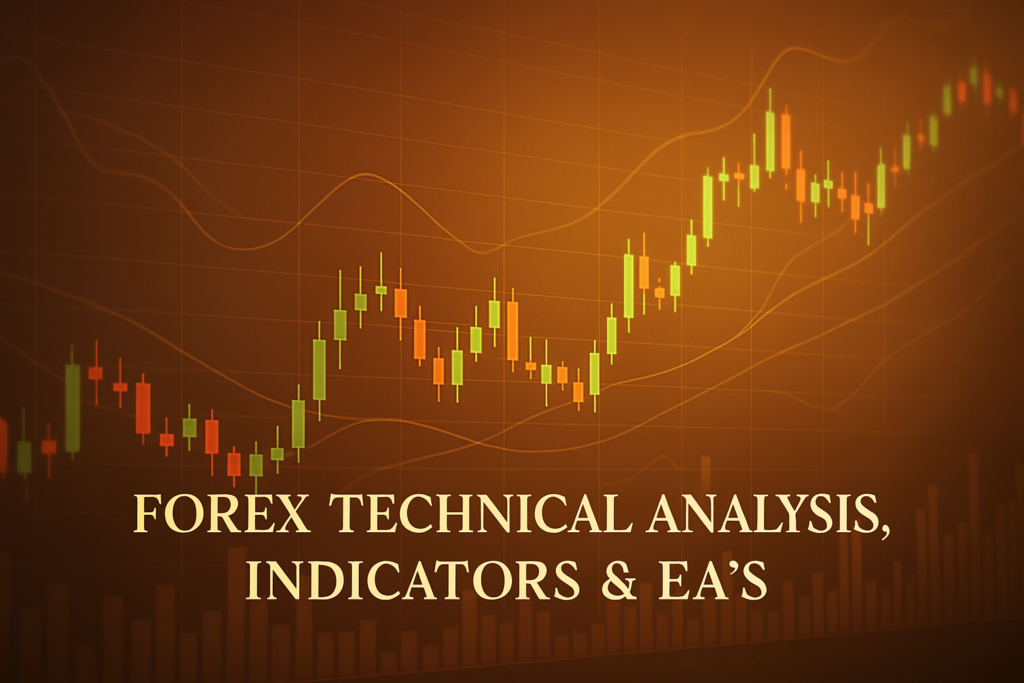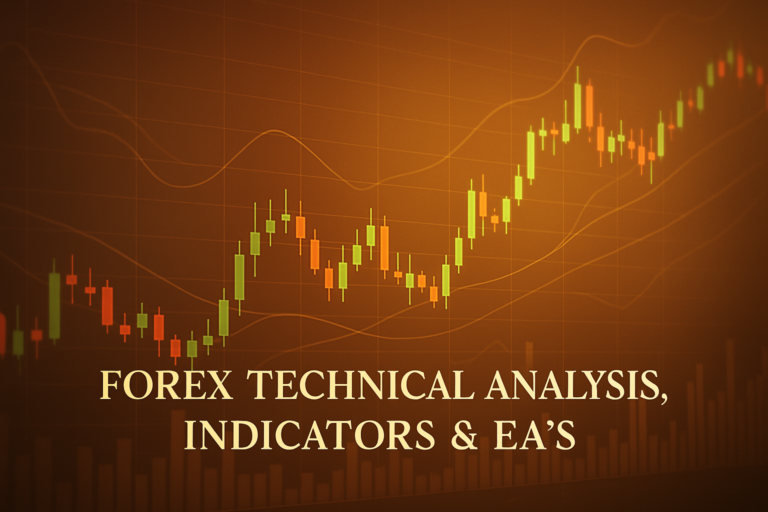
Moving average rules help simplify Forex trading by identifying trends and making informed decisions.
Have you ever felt lost in the world of Forex trading? The moving average rules can be your guiding light. These rules help traders make sense of price movements, providing clarity amid the chaos. Imagine riding a wave; the moving average shows you how to surf the ups and downs of the market.
But, understanding moving average rules isn’t always easy. Both beginners and professional traders often struggle to apply these concepts effectively. They may feel overwhelmed by the different types and calculations involved. Yet, mastering these rules is crucial for your trading journey.
In this article, we will explore moving average rules in detail, providing insights and practical examples to help you leverage this tool.
For instance, let’s take a look at the USDCHF analysis May 08, 2025. This analysis will showcase how moving averages can impact trading decisions.
What is a moving average rules?
Moving average rules are simply a way to smooth out price data over a specific period. Imagine you’re tracking the temperature every day. Some days are hot, others are cold. Instead of focusing on daily ups and downs, you could average them over a week. That’s what moving averages do for prices in Forex trading.
Types of moving average rules
There are various types of moving averages, but the most common ones are:
- Simple Moving Average (SMA): This is the average price over a certain number of days. It’s the easiest to understand.
- Exponential Moving Average (EMA): This gives more weight to recent prices, making it more responsive to new information.
- Weighted Moving Average (WMA): Similar to EMA, but uses different weights for each price point.
How moving average rules smooth out price action
When you look at a price chart, it can be noisy. Prices go up and down all the time. Moving averages smooth this noise. They create a line that helps traders see the general direction of the market. This makes it easier to identify trends.
Common periods used and why
Most traders use moving averages over specific periods like 5, 10, 20, 50, or 200 days. Shorter periods react quickly to price changes, while longer ones provide a broader view. For example, a 50-day moving average shows you the average price over the last 50 days. This helps traders make decisions based on long-term trends.
The History of moving average rules: How It Became Popular
Origin of moving average rules
Moving average rules have been around for a long time. They were developed by mathematicians and traders who needed a better way to understand market behavior. The concept gained traction in the early 20th century as more traders began using charts to analyze price movements.
When did traders start using it widely?
As computers became more accessible in the late 20th century, moving averages became a popular tool among traders. They could easily calculate and plot moving averages on charts, making it simpler to identify trends.
Real-life stories
Many professional traders have made fortunes using moving average rules. For example, one trader noticed a consistent pattern in crossover signals between short and long-term moving averages. By following these signals, he turned a modest sum into a substantial profit over time.
Advantages and Disadvantages of moving average rules
Advantages:
- Helps identify trends easily: Moving averages can clearly show whether a market is trending up or down.
- Useful for dynamic support and resistance: Traders often use moving averages as support or resistance levels, helping them make buy or sell decisions.
- Works well for crossover strategies: When a short-term moving average crosses above a long-term moving average, it may signal a buy opportunity.
Disadvantages:
- lags behind price movements: Since moving averages are based on past prices, they can miss sudden price changes.
- Can give false signals in sideways markets: In a ranging market, moving averages can create misleading signals, leading to poor trades.
How to Apply moving average rules on MT4 & MT5
Step-by-step guide to adding moving average rules on charts
To add moving average rules to your charts on MT4 or MT5, follow these steps:
- Open your trading platform and select the chart you want to analyze.
- Click on the ‘Insert’ menu, then select ‘Indicators’ and choose ‘Trend’ followed by ‘Moving Average.’
- Set your desired parameters and click ‘OK’ to add it to your chart.
Customizing moving average rules settings
You can customize the settings to suit your trading style. Adjust the period, color, and type (SMA or EMA) to make the moving average more visible and relevant to your analysis.
Saving templates for easy application
Once you have your moving average set up the way you like it, save the template. This way, you can apply the same settings to other charts quickly. Just right-click on the chart and select ‘Templates’ to save or load your preferred templates.
5 to 7 Trading Strategies Using Only moving average rules
All Time Frame Strategy (M5 to D1)
This strategy uses moving averages across different time frames. For instance, you may use a 20-day SMA on a daily chart and a 5-day SMA on a 5-minute chart. When the 5-day crosses above the 20-day, it signals a buy opportunity.
Trending Strategies
In trending markets, look for moving average crossovers to confirm trends. If the short-term moving average crosses above the long-term moving average, it’s a buy signal. Conversely, a cross below indicates a sell signal.
Counter Trade Strategies
In counter-trend trading, wait for a moving average to flatten out, indicating potential reversals. If the price bounces off a moving average, consider entering a trade in the opposite direction.
Swing Trades Strategies
For swing trading, use moving averages to identify entry points. If the price pulls back to a moving average during an uptrend, it could be a great buying opportunity.
5 to 7 Trading Strategies Combining moving average rules with Other Indicators
All Time Frame Strategy (M5 to D1)
Combine moving averages with the Relative Strength Index (RSI) for a robust strategy. Use a 14-period RSI; when it shows overbought conditions and the price is above the moving average, consider selling.
Trending Strategies
In trending markets, use moving averages with MACD. When MACD crosses above the signal line and the price is above the moving average, it’s a strong buy signal.
Counter Trade Strategies
Combine moving averages with Bollinger Bands. If the price touches the lower band while below the moving average, it might signal a buy opportunity.
Swing Trades Strategies
For swing trades, pair moving averages with volume indicators. Increasing volume on a moving average crossover can confirm the strength of the signal.
Understanding trading sessions is also crucial for timing your trades effectively.
Top 10 FAQs About moving average rules
1. What is a moving average?
A moving average is a calculation that helps smooth out price data by creating a constantly updated average price.
2. How do I calculate a simple moving average?
To calculate a simple moving average, add the closing prices for a specific period and divide by the number of periods.
3. What is the difference between SMA and EMA?
SMA gives equal weight to all prices in the period, while EMA gives more weight to recent prices, making it react faster to price changes.
4. How can moving averages help me in trading?
They help identify trends, dynamic support and resistance levels, and generate buy/sell signals through crossovers.
5. Can moving averages work in sideways markets?
They can, but they may give false signals, so it’s best to combine moving averages with other indicators in such conditions.
6. What periods should I use for moving averages?
Common periods are 5, 10, 20, 50, and 200 days. Shorter periods are better for quick trades, while longer periods provide a broader view.
7. How do I know when to enter a trade using moving averages?
Look for crossovers; when a short-term moving average crosses above a long-term moving average, it’s a buy signal, and vice versa for sell signals.
8. Can I use moving averages in all markets?
Yes, moving averages can be used in various markets, including Forex, stocks, and commodities.
9. What are the limitations of moving averages?
They lag behind price movements and can give false signals in choppy markets.
10. Should I rely solely on moving averages for trading?
While moving averages are useful, it’s wise to combine them with other indicators and analysis techniques for best results.
Conclusion
In summary, moving average rules are a powerful tool in Forex trading. They help you identify trends and make informed decisions. However, it’s essential to understand their advantages and disadvantages to use them effectively.
Before risking real money, test different strategies and find what works best for you. Remember, practice makes perfect, and with time, you’ll master moving average rules!
Want to build a solid foundation in forex? Here’s a recommended read Bankrate, World Bank
Expand Your Knowledge
- 📌 Forex Trading Learning Road Map
- 📌 Forex Trading Course with no Fees
- 📌 Forex Trading Issues, Problems, and Solutions
- 📌 Forex Daily Forecast & Live Updates
- 📌 Forex Fundamental & News Analysis: Tomorrow’s Market Movers & Trade Opportunities
- 📌 Forex Education Hub: Learn & Profit
- 📌 Forex Technical Analysis, Indicators & EA’s
Start Trading Today
Ready to take your forex trading to the next level? Open an account with Exness, one of the most trusted platforms in the industry. 👉 Sign Up Now and trade with confidence!
My recommended broker stands out with ultra-low spreads for beginners, instant withdrawals, and zero spread accounts for pro traders.
Trusted since 2008, lightning-fast execution, no hidden fees, and a secure, transparent trading environment—giving you the edge you need to succeed. 🚀
YouTube Video Library: Related Videos
Note: The video above is embedded from YouTube and is the property of its original creator. We do not own or take responsibility for the content or opinions expressed in the video.



